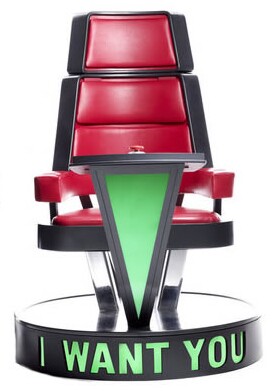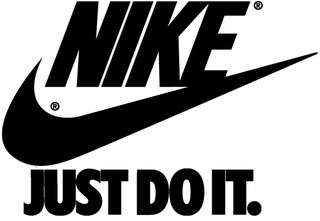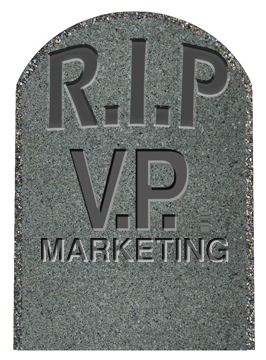First, a cork-popping congratulations to the Broncos, and condolences to all the Panthers fans. Now comes the Monday-morning quarterbacking and all the after-game analyses, almost as much fun as following this year’s election season!
But personally, I think the big winner in the game was Kia Motors, whose “Walken Closet” commercial was one of the truly great moments in Super Bowl advertising. Feel free to click here to watch the spot and then come right back for the play-by-play.
Welcome back!
For a commercial – or any advertising, for that matter – to be effective, it has to accomplish several critical feats: It has to break through and attract attention, it has to be clear in its fundamental selling message, the message has to be compelling, and it has to be memorable when you walk away from it.
I’ve argued for years that most Super Bowl commercials only accomplish the first and last requirements. You watch and enjoy them, you may laugh at their gags and you talk about them after the game. But on the selling-side, most hardly make it past the scrimmage line. They don’t leave you wanting to know more about the product or even “get” the product’s unique selling proposition (USP), the thing that makes the product unique among its competitors. That surely can’t be said of the Kia spot.
First off, who can’t be drawn into Christopher Walken’s creepily intense performance no matter what he does? And the gag about the “Walken closet” is hilarious. But when Walken metaphorically compares most mid-sized sedans to uninspired beige socks and the Optima to the “world’s most exciting pair of socks,” in a way only he can deliver, he absolutely nails the Optima’s unique selling proposition: a car with “pizzazzzzz” in a world of otherwise boring mid-sized competitors. If you’re thinking about buying a mid-size after watching this commercial, you’re compelled to at least check out the Optima. (After all, who wants to be boring and beige?)
Our lives are way too busy for us to be attracted to “beige” things. Yet, too many marketers don’t project that same line of thinking toward attracting customers. Decisions are made daily to keep producing and running the same run-of-the-mill, uninspiring stuff…week after week, year after year.
Keep in mind that when you as a consumer see anything from a company, either your opinion of that company is enhanced or it’s not. There’s no middle ground. You either like them a bit more or you go in the other direction. So why do so many marketers turn that compelling, money-making value proposition into a beige and uninteresting “me-too” message that each and every one of their competitors could say.
I don’t know about you, but I’ve never been bored into buying anything. And I’m even going to say that 99% of your customers are with me on this. The marketing you do for your company should be an extension of you. You’re the person who’s responsible for communicating the passion of your company. When you talk about your business with others, hopefully your eyes twinkle, your heart begins to race, your voice becomes more dynamic and people are instantly attracted to you. When that show of enthusiasm and excitement happens, no one would confuse you with being boring, right? Of course not. So look at your marketing and see if it reflects that same level of specialness. (Or you could always ask friends, colleagues or suppliers who will be candid with you, “Does this marketing make you want to pick up the phone or know more about us?” If the answer is not an enthusiastic “yes,” then it’s time to start over.)
In a world of “beige” mid-size sedans, there’s the Kia Optima. In your competitive world where there’s so much beigeness, where do you stand? C’mon, punch it!
####
Rolf Gutknecht is vice president, director of account services for LA ads. To discuss your thoughts with Rolf on this blog or any marketing matters, email via this link, or visit www.LAadsMarketing.com. You can also connect with Rolf on LinkedIn.
 Over the years, there’s one TV show that I make a point of watching and it’s “The Voice.” It has nothing to do with me fashioning myself as a singer and secretly wishing I was up there performing. In fact, I’m not a good singer at all. When our family goes to our annual vacation spot and the karaoke machine comes out, and I do my couple of songs, people just wince at how bad I am. Not to put too fine a point on it but when I was a kid, I was asked to leave (read: kicked out) of the kid’s church choir. Yeah, I’m that bad.
Over the years, there’s one TV show that I make a point of watching and it’s “The Voice.” It has nothing to do with me fashioning myself as a singer and secretly wishing I was up there performing. In fact, I’m not a good singer at all. When our family goes to our annual vacation spot and the karaoke machine comes out, and I do my couple of songs, people just wince at how bad I am. Not to put too fine a point on it but when I was a kid, I was asked to leave (read: kicked out) of the kid’s church choir. Yeah, I’m that bad.
Anyway, as I was watching the show last week, I started wondering why I had come to like the show as I have. Was it the way that show was setup – from blind audition to knock-out rounds, or was it that the judges could steal a singer that was dropped by another coach, or was it the celebrity coaches, or the singers themselves, or something else. And in doing so, out of the blue it occurred to me that there’s a few things that as marketers we could all learn and begin to apply to our individual marketing activities.
So what lessons are to be learned in order to connect with your audience:
While I can’t tell you who will win this season’s competition, I can tell you that the singers who have strategically given thought to the songs that they should sing and how they should perform those songs, will likely be the last ones standing. They understand that in order for people to buy into who they are and what they can become, they need to connect with the coaches and audiences in ways more powerful and moving than those they’re competing against. WOWing them is a must.
Because at the end of the day, what you tell prospective customers has to fascinate and captivate them – in a way that keeps them engaged and wanting to know more about you, which will lead to increased sales and revenue. As advertising legend, Bill Bernbach, said: “The truth isn’t the truth until people believe you, and they can’t believe you if they don’t know what you’re saying, and they can’t know what you’re saying if they don’t listen to you, and they won’t listen to you if you’re not interesting, and you won’t be interesting until you say and do things imaginatively, originally, freshly.” (NOTE: Now read it again but this time insert the name of your company every time you come to the words “you.”)
Those who always wish to sing will find a song.
####
Rolf Gutknecht is vice president, director of account services for LA ads. To discuss your thoughts with Rolf on this blog or any marketing matters, email via this link, or visit www.LAadsMarketing.com. You can also connect with Rolf on LinkedIn.
Last week, we got a copy of a readership survey related to a trade ad we ran for a client. In the survey, the ad was among the top-ranked when it came to the most seen, most remembered and most read. But what was absolutely fascinating was how widely the readers’ reactions varied when asked their impressions of the ad. Their verbatim responses ranged from “Tacky” to “Perfect 10/10.” One reader commented “Poor taste, undignified, a true turn-off.” Another reader said “I clipped it out and it is on my refrigerator now. The whole idea of standing out in a crowd is extremely important to me if your business wants to be noticed.” Several said they were “shocked at first” but then got the message and completely agreed with the point.

In fact, I’ll say nearly 25% generally disapproved of the ad and maybe another 5% very strongly disliked it. On the other hand, the number of respondents who liked the ad and got its message was exceedingly high. And the turnout was successful.
What’s my point? Well I have three points to be precise.
The first is, we begin by acknowledging that we’re not right for everybody. In fact, we believe that as a marketing agency, we’re probably right for just a few percent of business operators, those who are strongly marketing-oriented and know that traditional advertising doesn’t get the attention of a disinterested public. The ad, therefore, is self-qualifying and will provoke a certain number of negative responses. That’s just fine, since again, we’re not right for everybody. Neither should you try to be all things to all people. Those that attempt such alchemy are doomed to blend in with all their competitors. Be different and proud of it. Not everybody is a Mac user. Not everybody likes Starbucks coffee. These hugely successful companies know who their market is and they don’t try to please everybody.
My second point is, it’s so damned tempting to knee-jerk to negative responses. One of my favorite quotes is “Everybody likes it until somebody doesn’t,” meaning the one or two negative voices often seem to drown out all the positive voices. It’s human nature to want universal approval. But it’s smart marketing to realize that no matter how hard you try, there will always – ALWAYS – be dissenters and not to let that veer you off course. (Just because someone doesn’t like it doesn’t mean they’re right or speak for the majority.) I’ve had clients who chose to kill a good campaign because they got a couple of negative calls and missed the tidal wave of silent support. People seldom call in to express their acclaim about an ad they like; they voice it at the sales counter. The trick is to start by knowing who you are and who you’re most right for (going back to my previous point), and reconcile that against the overall trend in audience feedback.
My third point is that when you commit to being really visible, you are choosing to declare your difference and necessarily you are stepping out on a limb. Strong, memorable, provocative advertising is risky stuff, not for the meek or conservative. One has to be willing to suffer a few arrows. Even to fall off that limb once in a while. But in a society that’s over-saturated with commercial messages, you have to stand apart to be noticed – that is unless your budget allows brute force bombardment. We don’t have that kind of money. Do you?
We’re very happy to have clients who like our unique direction, and must be satisfied that most of the industry is more conservative in approach than we are. Hey, Jaguar has to live with the fact that more people choose Hondas.
The fact that you’re reading our blogs, and have read this far in today’s post demonstrates that you’re within the segment who has the opportunity and vision to succeed against your more conservative competitors.
You just can’t do it with thin skin.
####
Rolf Gutknecht is vice president, director of account services for LA ads. To discuss your thoughts with Rolf on this blog or any marketing matters, email via this link, or visit www.LAadsMarketing.com. You can also connect with Rolf on LinkedIn.
 Oh, the wonder of beautifully crafted taglines. Those few strategically selected words that sum up everything your business stands for and what you want your target audience to know about you. They’ve made companies fortunes by telling people what makes them stand out in the sea of sameness. Consider FedEx’s brilliant “When it absolutely, positively has to be there overnight.” Nine simple words that tell FedEx buyers precisely what they’re going to get, while simultaneously informing all of its employees what their mission is. What if FedEx’s slogan was “We ship things!”? Would Nike be as successful if it allowed an executive committee to red-pencil “Just do it” into “When you need great shoes?” How would BMW’s vision change if “The Ultimate Driving Machine” became “Our cars are fun to drive!” My point is that these companies didn’t settle for weak platitudes or vague, generalized statements that could have applied to their competitors. Nope, they decided that they weren’t going to settle. Instead standing out and differentiating themselves was business-critical. Can the same be said for your company and its marketing? Do you have a themeline or slogan that makes you stand out? Is it unique and memorable? Or is it mediocre because somewhere down the line, people settled?
Oh, the wonder of beautifully crafted taglines. Those few strategically selected words that sum up everything your business stands for and what you want your target audience to know about you. They’ve made companies fortunes by telling people what makes them stand out in the sea of sameness. Consider FedEx’s brilliant “When it absolutely, positively has to be there overnight.” Nine simple words that tell FedEx buyers precisely what they’re going to get, while simultaneously informing all of its employees what their mission is. What if FedEx’s slogan was “We ship things!”? Would Nike be as successful if it allowed an executive committee to red-pencil “Just do it” into “When you need great shoes?” How would BMW’s vision change if “The Ultimate Driving Machine” became “Our cars are fun to drive!” My point is that these companies didn’t settle for weak platitudes or vague, generalized statements that could have applied to their competitors. Nope, they decided that they weren’t going to settle. Instead standing out and differentiating themselves was business-critical. Can the same be said for your company and its marketing? Do you have a themeline or slogan that makes you stand out? Is it unique and memorable? Or is it mediocre because somewhere down the line, people settled?
Imagine you owned a small piece of your buyers’ brains. And every time they thought about making a purchase where your product or service could be considered as an option, the brand or company name came to mind. For example if they were thirsty, they thought, “This Buds for you, “ or if they wanted a burger they thought, “Have it your way!” or if they when were tired and looking for a lodging for the night they remembered “We’ll leave the light on for ya!” That’s what the marketing slogans from Budweiser, Burger King and Motel 6 do, they help people remember a product and increase their propensity to buy. And that’s what a good marketing slogan can do for you. Unlike your company tagline or marketing message, your marketing slogan may change regularly or you may have more than one. For example American Express has: “Membership has its privileges.” And “ Don’t leave home without it.”
The taglines that work the hardest are not puns or rhymes, but ones that present many layers of meaning, where one layer can speak to the product while another speaks to value or even a brand a brand belief. It can manifest itself in any number of ways…online or offline. In ads and as a social media hashtag. On promotional products and product packaging. Most everywhere.
So what does a good tagline do? At its best, a good tagline conveys a singular value, loud and clear, on what a brand stands for. Remember, powerful words are powerful things. It also connects across all generations, geographies and markets, and becomes relevant for the consumer in his or her own personal way. And the right tagline doesn’t work for competitors because it’s only unique to your brand/company. Unfortunately, far, far, far too many taglines are generic and meaningless. In this time of technology disruption and increasing competition, clear positioning is valuable. Problems occur when the company and its messaging doesn’t have a focus, or the tagline could apply just as easily to other companies. In the marketplace, taglines are used to quickly communicate company differentiation. That said, taglines aren’t developed for customers alone. They’re also important for internal audiences as they can align an organization around a common cause and vision.
With that in mind, there are plenty of taglines out there that don’t work because they fail to connect. They’re easily overlooked, dismissed as “every day,” they lack originality or even mistaken for another brand. This usually happens when one of these mistakes happens:
Alternatively, good taglines have a number of hard-working qualities to them. They’re:
The process of developing a fresh, original and imaginative tagline is no easy task. From competitive research and brainstorming to paring down the list of options to more brainstorming, the process can take more time than you think …not to mention the back-and-forth given the stakeholders who are involved. And even then, the tagline may not be “all that.” That said, here’s how powerful a tagline can be – after 50+ years! Avis Rent-A-Car built its business with “We Try Harder” (which they finally put out to pasture just a few years ago). How the phrase came to be sounds like something out of Mad Men. The tagline was created in 1962 and actually came about in the response that Bill Bernbach, the co-founder of DDB, received from company management when asking why anyone ever rents a car from them. “We try harder” was the answer. Within a year, Avis turned a profit for the first time in over a decade and the rest is history.
####
Rolf Gutknecht is vice president, director of account services for LA ads. To discuss your thoughts with Rolf on this blog or any marketing matters, email via this link, or visit www.LAadsMarketing.com. You can also connect with Rolf on LinkedIn.
 The life of a hummingbird rarely exceeds four years. The life expectancy of a Marketing Director (or CMO or VP of Sales & Marketing) at any given company is even less than that. The typical tenure these days is a little more than 3 years and this is up from about 26 months in 2004. In fact, as you stroll through the offices at many companies, it’s an easy bet which executive is a dead man (or woman) walking: the Marketing Director.
The life of a hummingbird rarely exceeds four years. The life expectancy of a Marketing Director (or CMO or VP of Sales & Marketing) at any given company is even less than that. The typical tenure these days is a little more than 3 years and this is up from about 26 months in 2004. In fact, as you stroll through the offices at many companies, it’s an easy bet which executive is a dead man (or woman) walking: the Marketing Director.
What are some of the reasons causing such a short tenure? What are some things a Marketing Director can do to be successful? How much of that is on the company and how much is brought on by the individual?
Ok, so how much of this is do you see or experience in the world that you live in? If you’re like the vast majority of Marketing Directors in this country, you see any of these issues popping up on a fairly regular basis. Here are a few things to consider in order to make sure you’re not having to call your executive recruiter anytime soon.
While the marketing landscape changes so quickly, the good news is that a Marketing Director can succeed in the face of headwinds no matter which way he/she faces. It may be more challenging than it should be, but stand true to your brand, be current and always in the know, and be bold enough to make a difference….otherwise, chances are, you might be dusting off that resume.
####
Rolf Gutknecht is vice president, director of account services for LA ads. To discuss your thoughts with Rolf on this blog or any marketing matters, email via this link, or visit www.LAadsMarketing.com. You can also connect with Rolf on LinkedIn.
 Most every time I listen to a radio spot in my car, see a TV spot on cable or fan through the pages of a magazine (trade or consumer), I find myself wincing. Ad after ad tells the same sad story: money spent leading to no results. In fact, I’d venture to say that better than 85% – 90% of the ads lay the same leaden egg. Oh, the humanity!
Most every time I listen to a radio spot in my car, see a TV spot on cable or fan through the pages of a magazine (trade or consumer), I find myself wincing. Ad after ad tells the same sad story: money spent leading to no results. In fact, I’d venture to say that better than 85% – 90% of the ads lay the same leaden egg. Oh, the humanity!
If you’re questioning whether your advertising is doing what you paid it to do, odds are it’s not. And although there are master classes you might take in advertising creativity, marketing strategy and media planning, it’s very likely the problem falls within four main areas. Checking off each point, you can estimate your ad’s effectiveness even before you place it. I mean it.
Here then are the four fundamental concepts that can make a meaningful difference in how successful your next advertising effort is.
1) Have a something compelling to say. And by that, I mean not just compelling to you and your staff, but to a completely disinterested audience. If you’ve followed my posts for any length of time, you know that I frequently observe that people don’t like advertising, and completely ignore the boring or hard-to-figure-out kind. So whatever you have to say must go the distance to alter their indifference. Don’t just tell your audience you’re “a leader in the industry” or that you’ve been around for three generations. They’ve heard that so many times before from you and your competitors that it means nothing to them. Instead tell them something they don’t know, something that might even surprise them. You can tell when someone’s ad is truly compelling when you think, “Gee, I didn’t know that!” We sometimes call that a “sticky” message, one that has staying power after the reader has turned the page or flipped the channel.
2) Sell, don’t just tell. One of the most egregious mistakes advertisers make is simply laying out all the features of their product or service and expect the audience to figure out why that’s important to them. Often that’s done in the form of five or seven bullet points, such as:
or in Business-to-Business ads (snatched from the pages of a recent trade pub):
Yikes! There’s no emotion in that. There’s no selling. There’s no story or connection. Instead of praying that maybe one or two bullets might hit home with some member of the audience – or worse, trying to be all things to all people – why not focus on one point at a time and spell out why that point really matters. People don’t buy bullets. They don’t buy features. But they do buy benefits and ideas that add value to their lives. Always be thinking, from their point of view, “what’s in it for me?”
3) Be your own brand and not a clone of others. All too often, within any given industry, I see ads in which the logos and contact information are interchangeable, one company’s with another’s. None stand out, all look alike, and thus all the players are perceived as a commodity. Here’s a question for you: If your logo was blocked out of your ad or commercial, would the audience still know it’s yours? Take, for instance, Jack-In-The-Box. Their commercials are radically different from McDonalds’. BMW’s ads are unmistakably theirs and not Mercedes’. It’s a matter of message but also a matter of style, personality and consistency. The more striking and distinctive your ads are, the stronger competitive impact they’ll make, while your competitions’ ads could be just anybody’s. Dare to be Different!
4) Tell the same story across all your platforms. With all the buzz about Social Media, it strikes me as odd that most business Facebook pages and outbound Tweets have little in common with their owners’ main marketing messages. In part that’s because the marketing messages themselves aren’t that well-defined. But it’s also because the marketers don’t appreciate the importance of speaking with the same voice at any touchpoint. Good marketing is a collective enterprise and an erosive processes. For instance, if your main story is about how your company has been around for over 100 years, use your Facebook pages to talk about the early days of your firm, the companies you’ve served, etc. Make sure your phone hold-message tells the same story. Make sure you hold special events or promotions that support the theme. If you don’t keep hammering away at the same selling proposition at every touchpoint, then each effort conflicts with every other.
While hardly a full compendium of marketing knowledge, if you make the effort to assure your advertising and marketing is consistent with these four points, you’ll be far out in front of 85% of your competition. And that’s the goal, to create ads your customers will react to and that your competition will hate.
####
Rolf Gutknecht is vice president, director of account services for LA ads. To discuss your thoughts with Rolf on this blog or any marketing matters, email via this link, or visit www.LAadsMarketing.com. You can also connect with Rolf on LinkedIn.
 Over the years, whether within an advertising/marketing agency or in the corporate environment, I’ve worked with people who have a distorted view of what marketing can do. Mostly these people think that all it takes is slapping together a few concepts to create an ad coupled with little bit of social media and some PR for good measure and the marketing is complete. The thought being that sales will be pouring in the door and big bonuses are just around the corner. After all, most anyone can do this “marketing stuff,“ right?
Over the years, whether within an advertising/marketing agency or in the corporate environment, I’ve worked with people who have a distorted view of what marketing can do. Mostly these people think that all it takes is slapping together a few concepts to create an ad coupled with little bit of social media and some PR for good measure and the marketing is complete. The thought being that sales will be pouring in the door and big bonuses are just around the corner. After all, most anyone can do this “marketing stuff,“ right?
Alternatively, when a company is not realizing their business or sales goals, we as marketers hear things like: “We’re just not getting the sales that we should because our marketing just isn’t working.” Or “It’s Marketing’s fault that sales are down!” while, in fact, there are other business issues that are at the root cause. There’s no question a solid marketing program can increase your business, but realistically, it can’t fix everything (although ineffective marketing activities might very well make matters worse). Below are 5 things marketing can’t do for you:
Marketing cannot overcome leads that are not being followed up. I did some consulting at company and upon seeing a couple of boxes marked “Tradeshow forms,” I asked them what that meant. They told me it was customer inquiry cards that they had received during the past 3 months of tradeshows they had attended. These customer inquiries had yet to be entered into the system which meant these prospects hadn’t yet been contacted. Which meant potential sales were not happening. And yet, this company had hired me to help them find ways to generate more sales from …wait for it… new prospects. When opportunities like the aforementioned happen, you’ve got to act on them and quickly. If you were interested or wanting to hear from a company regarding a product or service they offered, especially after having given them your contact info, how soon would you expect to hear from them? Yeah, that’s what I thought.
Marketing can’t make people buy things they either don’t want or can’t afford. It doesn’t matter how great your product or service is, if you’re selling to people who either don’t have the interest or the means to buy it, then your marketing is going to fail no matter how brilliant it may be. Yes, marketing can create messaging that ignores the problems with a product or service but with 24/7 access to information and customer comments on the web, problems or issues get exposed quickly. Bottom line: is your product or service delivering on the promises you’ve made? Have you provided the value that the customer is looking for? Basically it all boils down to this: before you decide you need more marketing, take a few moments and make sure the marketing you’re doing is really the right solution for your business.
Marketing can’t be done without a realistic budget. The fact is, if your company is spending a good deal less than the competition, you’re probably not making any significant gains in market share. Yes, there might be a competitor that’s overspending, but my experience working with companies from the Fortune 100 to small mom-and-pops is that you don’t pose a serious competitive threat unless your marketing budget is in the same ballpark with your competition….it’s just one of those “marketing truths.” Developing and then executing the marketing activities takes skill, experience and money and it doesn’t come cheap from anyone who knows what they’re doing. You get what you pay for.
Marketing can’t fix bad service or a bad customer experience. Again, in your own personal life, how often do you keep doing business with a company who doesn’t really value you as a customer as evidenced by their poor customer service? While marketing activities can bring prospects to the door, it can’t ensure that they’ll have an experience that they’ll want to repeat. Unfortunately, despite all this talk or lip service within organizations about being customer centric and “engaging” with their buyers, far too many companies see customer service as something other than what it is…a marketing opportunity that allows the customer to feel valued and appreciated. At the end of the day, when customers continue to have a lousy experience with your products or services or with your customer service reps or sales people, you and I know that’s a bad, bad place to be. Not only have you lost a customer for good, but they’ll probably go and tell others, which means you have to potential to lose future prospects as well.
Marketing can’t make you successful by tomorrow morning. Just because you start a marketing program doesn’t mean you’re immediately going to see your business explode. Marketing is about getting your name in front of your target market on a regular basis until they finally decide to give you a try. Investment in marketing communication for some brands should therefore be seen for what it is: reinforcing/strengthening favorable brand perceptions and insuring your brand’s strength and status for the future. Just as one or two workouts at the gym won’t immediately make you more muscular or leaner, you know that it’s improving your health for the long-term. Think of marketing in the same way…it takes time. That said, if pressed for new sales or new business clients right now, launching into a new marketing program may not be enough to get you where you want to be and you may want to start looking at other options.
And, we haven’t even addressed other issues such as the company not closing leads or not invoicing or collecting on unpaid accounts or it has too many expenses, etc., all issues that marketing can’t solve. At the end of the day, while it’s easy to immediately blame marketing for lack of business, we need to remind people that marketing is intertwined with many other aspects of the organization aimed at getting and keeping customers. Yes, it’s important to judge and course-correct marketing activities if business is lagging, but we need to look at the whole organizational picture to understand why business is slipping off. Otherwise, Marketing will continue to have the finger pointed at them.
####
Rolf Gutknecht is vice president, director of account services for LA ads. To discuss your thoughts with Rolf on this blog or any marketing matters, email via this link, or visit www.LAadsMarketing.com. You can also connect with Rolf on LinkedIn.
 I think we can pretty much all agree that most everyone, be it on the job or in our personal lives, is stretched thin on time. And this crunch for time has shortened our attention spans and concentration levels to the point that we’re lucky if we even remember some bits and pieces of phone conversations, face-to-face discussions, emails, etc., let alone those marketing messages that other companies put out in the marketplace in hopes we’ll act on them. Who has time for them?
I think we can pretty much all agree that most everyone, be it on the job or in our personal lives, is stretched thin on time. And this crunch for time has shortened our attention spans and concentration levels to the point that we’re lucky if we even remember some bits and pieces of phone conversations, face-to-face discussions, emails, etc., let alone those marketing messages that other companies put out in the marketplace in hopes we’ll act on them. Who has time for them?
With that scenario playing itself out in most everyone’s lives, marketers have a hard nut to crack when it comes to creating marketing messaging that sticks in order to counterbalance people’s shrinking attention span. Every marketer faces this reality daily. As most of us have heard, the average attention span does not exceed eight seconds (ten years ago it was 12 seconds). Comparatively, the attention span of the average goldfish is nine seconds. Capturing attention within eight seconds is a formidable challenge. As marketers, we have enough trouble with summarizing a message into a small packaging label, a web banner, a half page magazine ad, an outdoor board, or other media channels where the time or space allows for only something along the lines of a “quick bite.” Remember when the 60-second TV commercial was the norm? Then it went to 30 seconds and now we’re seeing more and more 15’s. And Vine built a platform around 6-second video posts and YouTube incorporated a “skip ad” option on their commercial videos after five seconds. Any more than that, and viewers lose interest and get really ticked off .
Oh, and let’s not forget about how the shrinking attention span has also led to people fidgeting between multiple screens (their TVs, computers, smartphones and tablets) at a rate of up to 21 times per hour, according to a recent study. Guess the average minutes a day that a person spends on their smartphone? 147 minutes. Now compare that to just under 120 minutes per day watching TV. Boy, we are distracted!
Growing evidence blames Internet, TV and computer games for creating shorter attention spans. Bombarded daily with mind-boggling amounts of things to read, watch and respond to, most of us have real difficulty paying attention on one subject for longer than a couple of seconds. How to fight against this rapidly decreasing attention span of an average consumer? How do you market to a group of people who don’t have enough time to listen to everything you have to say? It’s hard, and it’s getting harder to get and keep anyone’s attention.
Well, some marketers are trying to get people’s attention by going where more people seem to be…on social media, the “Land Of A Million Tweets, Comments And Posts” that repopulates itself every few days, or hours…or even minutes. And then there’s special offers, sales, email blasts and just about anything else that has a slight chance of possibly working. In doing so, I’d argue that for many companies, they’re not breaking through the clutter but instead adding to it.
It’s more important than ever to hold the attention of customers and prospects quickly and interactively in ways that weren’t possible or necessary in years past. So here are 5 messaging tips that will go a long way to having your audience stay tuned rather than drift away:
Now, at a time when attention spans are shorter and less focused than ever, you need to be more focused on making sure your marketing messaging doesn’t fall on deaf ears. There is too much noise because too many people want to be noticed without having to say anything worth hearing. The genuine voice sounds different and therefore it can be more easily discerned. The problem is, because of so much noise, people are hardly listening any more – expecting to hear nothing of worth anyway. Make every effort to be the voice that gets heard.
####
Rolf Gutknecht is vice president, director of account services for LA ads. To discuss your thoughts with Rolf on this blog or any marketing matters, email via this link, or visit www.LAadsMarketing.com. You can also connect with Rolf on LinkedIn.
 Over this past weekend, I went into a store that’s part of a 15-20 location chain, and upon entering, this place made sure that I understood that for them “It’s all About Exceeding Expectations!” Now as a line, it’s pretty pedestrian but it set the tone for what I was going to experience. And they were true to their word. But you see, it wasn’t just 5 words strung together. Instead this was, after speaking with the staff, their rallying cry for the first quarter of the year.
Over this past weekend, I went into a store that’s part of a 15-20 location chain, and upon entering, this place made sure that I understood that for them “It’s all About Exceeding Expectations!” Now as a line, it’s pretty pedestrian but it set the tone for what I was going to experience. And they were true to their word. But you see, it wasn’t just 5 words strung together. Instead this was, after speaking with the staff, their rallying cry for the first quarter of the year.
That got me thinking that not enough companies use rallying cries (or sometimes referred to as “battle cries”). After all, these rallying cries have been used for thousands of years to unite individuals into a collective identity and to emotionally charge them up before rushing forward to accomplish their mission. So let me ask, has your company instituted a rallying cry? And I don’t mean for a second a “mission statement,” which most companies have; because of group think, these mission statements lack originality, they’re as uninspiring as possible, and which 99.99% of employees couldn’t recite it to win a million dollars. Instead, what I mean is a short and catchy phrase that can inspire a company and fascinate your marketplace. A rallying cry will tell employees how to act and consumers what to expect.
When you institute a rallying cry, everyone knows what it means. Rallying cries are huge. They’re single themes that everyone connects to and rallies around. That theme ends up creating this “mini-vision” for individuals to focus on… a clear direction for the entire organization for a specified period of time which speaks to “this is what’s important to our organization right now!” And so this doesn’t come across as a theme line or slogan but rather an understandable call-to-action to employees and customers, one needs to define what the goals to be met will be. It can be your big goal for the year or your most important annual metric. Regardless, the rallying cry should be specific and measurable. This could take the form of something like “3x in 2y” (Tripling business in 2 years) or “500 in 2015” (500 new accounts in 2015) or “Quick Start 50” (making contact and setting presentation appointments with your Top 50 dream clients). You get the idea.
For some clients I’ve worked with, this rallying cry provides a reason for the organization to start working as a team rather than in siloed departments. There’s a tremendous power in this kind of focus as it helps the company achieve better results faster and gets them ready for the next team effort. It also keeps the people in the organization engaged because they know what their company’s goals are and how they fit in. Some companies have annual and quarterly and monthly rallying cries. I’m more of an annual/semi-annual guy.
To get started, here are a five elements to creating your own rallying cry:
Once the rallying cry is chosen, pledge eternal allegiance to it. The new rallying cry should be continually infused into sales meetings, customer presentations, press releases, collateral, the company website and all other marketing communications. And if appropriate and possible, its spirit, if not the actual words, should be communicated in your advertising activities. And then if or when the goal is achieved, it should be celebrated with the same enthusiasm as it was when first initiated as it’s important to show people that their hard work is much appreciated.
Think about this: If everyone in your company were to rally around a single inspiring theme, what kind of wonderful magic would be achieved? What kind of game-changing results could be achieved? A rallying cry is an amazing way to get people aligned. Whether your company’s goal is one that applies to all departments or relates to one specific department, a strong rallying cry can serve to unite the entire company to eagerly move toward the new destination created by that vision.
So, as the marketing champion within your organization, what better way to have people unite under an inspiring marketing message and create excitement throughout the ranks rather than with a rallying cry? “Onward and Upward!”…oh, I think that one has been used before.
####
Rolf Gutknecht is vice president, director of account services for LA ads. To discuss your thoughts with Rolf on this blog or any marketing matters, email via this link, or visit www.LAadsMarketing.com. You can also connect with Rolf on LinkedIn.
 I don’t know too many people who really like pictures of themselves. “Oh, I look too fat, too old, too…whatever!” Personally, I hate hearing my own voice on radio or in recordings. I think I sound goofy and inarticulate. And anyone who’s ever seen themselves on television (not including actors, of course) gets it from all sides. We simply don’t like seeing ourselves as we suspect other people really see us.
I don’t know too many people who really like pictures of themselves. “Oh, I look too fat, too old, too…whatever!” Personally, I hate hearing my own voice on radio or in recordings. I think I sound goofy and inarticulate. And anyone who’s ever seen themselves on television (not including actors, of course) gets it from all sides. We simply don’t like seeing ourselves as we suspect other people really see us.
Oddly enough, we’re the same way when it comes to our businesses. We’d just as soon not think about what we really “look like” to outsiders. The truth might be just too upsetting. But the truth always wins out. So what is the truth we must all face as professionals? What’s the best mirror we can hold up to see ourselves most clearly?
A couple of years ago, our agency was asked by an industry association to provide consulting services to their members. We found that we could do that most effectively by sending anyone who sought our consultation a 12-point questionnaire about their business. It was surprising how challenging it was for many to answer the most necessary questions about their own business’ strengths and weaknesses. We quickly realized that this was that mirror! This questionnaire, if taken seriously, forces company marketing officers to look inward honestly and be willing not to like the answers.
I herewith offer these same questions to you to ponder with respect to your own enterprise. But to do it properly, you cannot be superficial in your answers. You have to dig as deep as you can. And if you can only come up with the “obvious answer” or draw a complete blank, take that as a sign that there’s work to be done.
Ready? No cheating…
On your first read-through of these questions, I’ll bet you say, “Oh, I can answer all that, no problem!” OK, tough guy, then give it a go. Build up the sweat and answer these 12 questions to the very best of your abilities. However you answer it, whatever holes are left unfilled, whatever questions it brings up as you sit there stumped, you’ll have developed the most important document you need to move your company forward. Because getting to your destination of choice depends fundamentally on knowing where to start and taking your first step.
####
Rolf Gutknecht is vice president, director of account services for LA ads. To discuss your thoughts with Rolf on this blog or any marketing matters, email via this link, or visit www.LAadsMarketing.com. You can also connect with Rolf on LinkedIn.